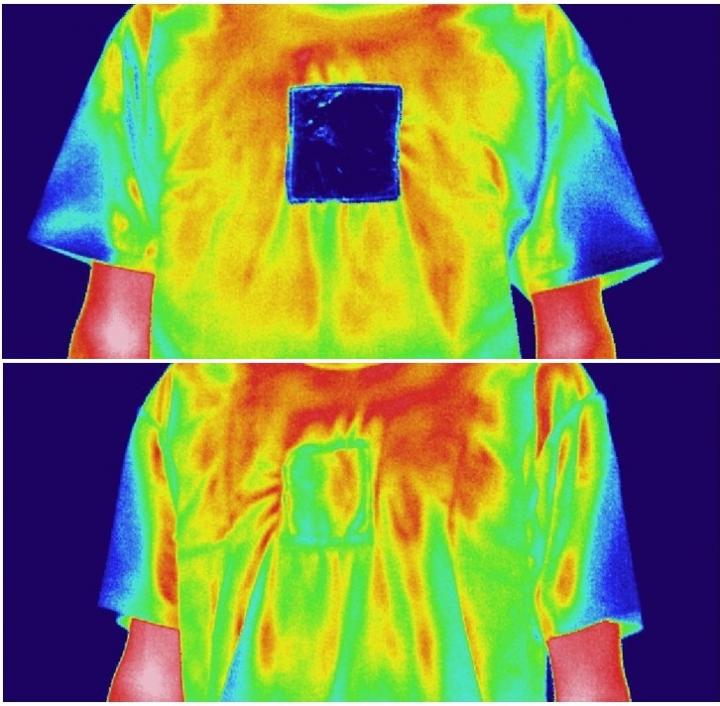
Credit: Adapted from Nano Letters 2021, DOI: 10.1021/acs.nanolett.1c00400
Clothing, from tank tops to parkas, helps people adapt to temperatures outdoors. But you can only put on or take off so much of it, and fluctuations in weather can render what you are wearing entirely inadequate. In a new study in ACS’ Nano Letters, researchers describe a high-tech alternative: a reversible textile they designed to trap warmth in the cold and reflect it during hot weather, all while generating small amounts of electricity.
Previous attempts to develop such sophisticated textiles for outdoor use have generally focused on either capturing thermal radiation or dispersing it. To integrate the two, Qiang Li, Min Qiu and colleagues made a layered fabric made of porous fibrous polymers. To trap warmth in the cold, they coated the heating side in zinc and copper nanoparticles to absorb solar energy and keep in thermal radiation from the body. To release heat in the hot sun, they placed a hierarchically porous structure on the cooling side to reflect sunlight and dissipate human body radiation. In the sun, the heating side increased a simulated skin’s temperature by as much as 14 F more than did black cotton. With the cooling side out, the textile dropped the temperature by 11 F compared to white cotton. In night tests, the heating side warmed the simulated skin by 5 F more than black cotton, but the cooling side did not result in a lower temperature. By attaching a small thermoelectric generator to the textile, the researchers could harness the temperature gradient between its inner surface and skin to produce a small amount of electricity. They say the textile is easy and inexpensive to fabricate and has breathability comparable to cotton. This textile creates new possibilities for many technologies, such as multi-functional camouflage or clothing that can generate electricity to someday power wearable electronics, the researchers say.
The authors acknowledge funding from the National Key R&D Program of China and the National Natural Science Foundation of China.
The abstract that accompanies this paper is available here.
The American Chemical Society (ACS) is a nonprofit organization chartered by the U.S. Congress. ACS’ mission is to advance the broader chemistry enterprise and its practitioners for the benefit of Earth and all its people. The Society is a global leader in promoting excellence in science education and providing access to chemistry-related information and research through its multiple research solutions, peer-reviewed journals, scientific conferences, eBooks and weekly news periodical Chemical & Engineering News. ACS journals are among the most cited, most trusted and most read within the scientific literature; however, ACS itself does not conduct chemical research. As a leader in scientific information solutions, its CAS division partners with global innovators to accelerate breakthroughs by curating, connecting and analyzing the world’s scientific knowledge. ACS’ main offices are in Washington, D.C., and Columbus, Ohio.
To automatically receive news releases from the American Chemical Society, contact [email protected].
Follow us: Twitter | Facebook
###
Media Contact
Katie Cottingham
[email protected]




